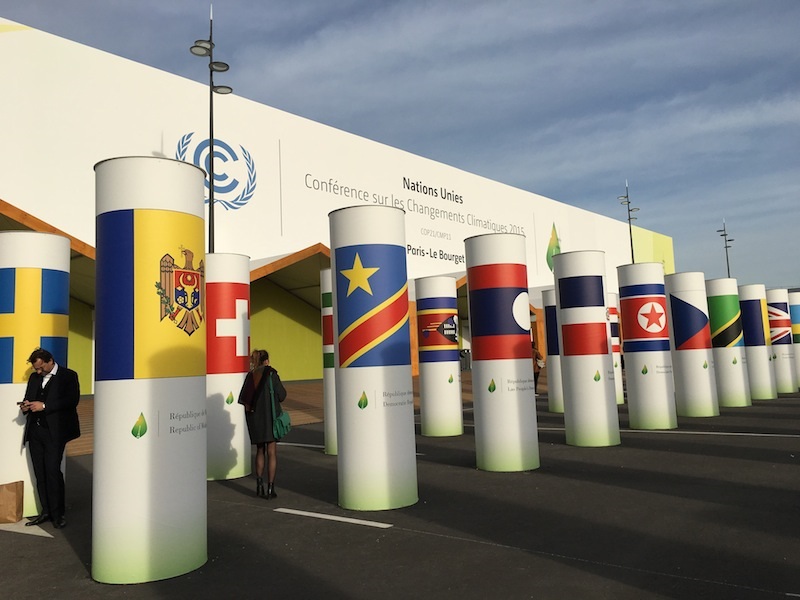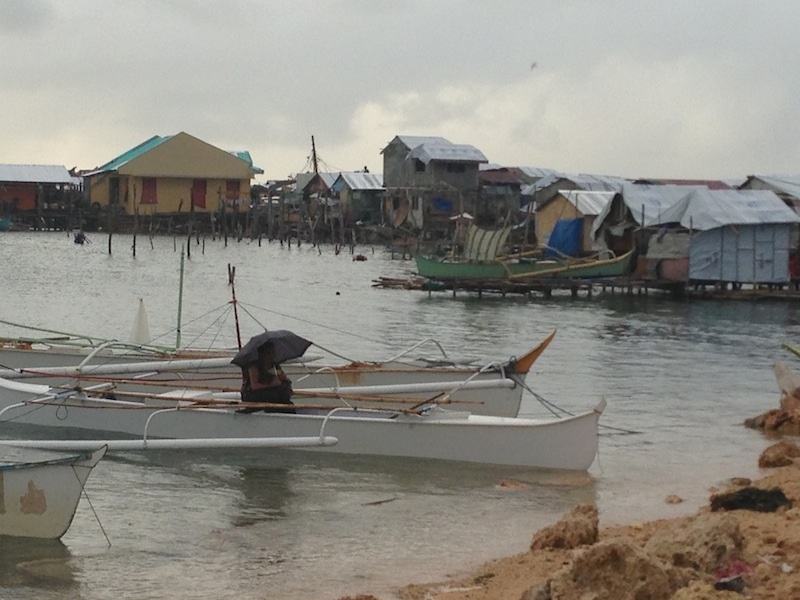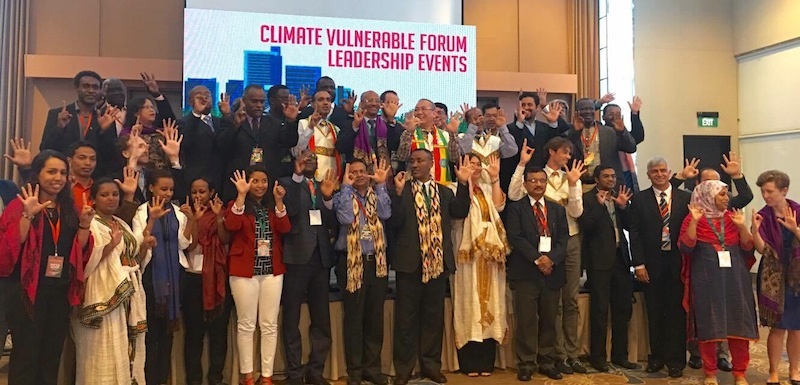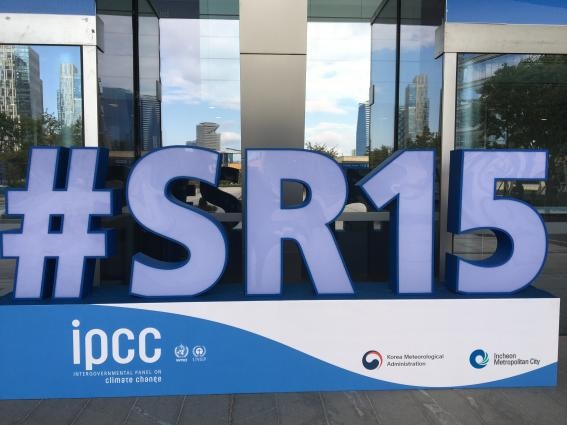
More than 190 countries are part of the UN process in finding solutions to climate change. Photo by Imelda Abano.
The need to protect the country’s ecosystem has become urgent following the Oct. 8 release of the Intergovernmental Panel on Climate Change (IPCC) Special Report on Global Warming of 1.5°C, Secretary Emmanuel De Guzman of the Climate Change Commission (CCC) said.
The IPCC special report on 1.5°C strengthens the Philippine leadership stand and policy advocacy on the pursuit of the global warming threshold and long-term temperature goal of 1.5°C target in the Paris Agreement, De Guzman added.
“ We echo the resolve of the most driven, most woke, the most vulnerable among us; we stand with those who see the science, the trajectories, and the outlook,” De Guzman said, adding that the Climate Vulnerable Forum under Philippine chairmanship advocated strongly for the 1.5°C climate ambition to define and drive the global climate action, a stand embodied in our Manila Paris Declaration adopted in Manila and in Paris in November 2015 by more than 40 developing nations.
The IPCC revealed that the worst effects of global warming could only be averted if governments seriously take drastic measures to cut carbon emissions, reduce energy use and remove carbon dioxide in the atmosphere.
Based on more than 6,000 peer-reviewed scientific studies, the IPCC special report on 1.5°C highlighted that the world needs to curb its carbon emission by at least 49 percent of 2017 levels by 2030 and to achieve carbon neutrality by 2050.
As this latest climate science informs national policy and global action, De Guzman said it also fortifies the moral foundation on which we call for greater resolve and unequivocal solidarity to do more and faster to make our one planet safer and our future more secure.
De Guzman said the CCC will share the findings of the report to President Rodrigo Duterte, to the members of the Cabinet, the Senate and the House of Representatives, the judiciary and the leaders across the country. This report, he said, will serve as a guide on policymaking, development planning, and programming.
De Guzman added that the commission will take the report in consideration as officials update the country’s National Climate Change Action Plan, and finalize the Nationally Determined Contribution as well as pursue various policy reforms for sustainable development and poverty eradication.

A coastal area in Guian in Eastern Samar. Photo by Imelda Abano.
“The time is now to uphold the integrity of our ecosystems, to protect local communities from the onslaught of extreme weather, and to secure the sustainable supply of food and water, and the health and safety of our homes and our communities,” De Guzman said.
Climate-related risks to health, livelihoods, food security, water supply, human security, and economic growth are projected to increase with global warming of 1.5°C and increase further with 2°C, according to the report, adding that populations at disproportionately higher risk of adverse consequences of global warming of 1.5°C and beyond include disadvantaged and vulnerable populations. This includes some indigenous peoples, and local communities dependent on agricultural or coastal livelihoods.
Scientists have high confidence that regions at disproportionately higher risk include Arctic ecosystems, dryland regions, small-island developing states, and least developed countries. Poverty and disadvantages are expected to increase in some populations as global warming increases. It said that limiting global warming to 1.5°C, compared with 2°C, could reduce the number of people both exposed to climate-related risks and susceptible to poverty by up to several hundred million by 2050.
“One of the key messages that comes out very strongly from this report is that we are already seeing the consequences of 1°C of global warming through more extreme weather, rising sea levels and diminishing Arctic sea ice, among other changes,” said Panmao Zhai, Co-Chair of IPCC Working Group I.
The IPCC report must stress that limiting global temperature increase to 1.5°C is not impossible but very challenging, said climate expert Rosa Perez who is also a lead author of the IPCC’s special report on 1.5°C.
“ It can go hand in hand with achieving other world goals such as the Sustainable Development Goals. Limiting global warming would also give people and ecosystems more room to adapt and remain below relevant risk thresholds,” Perez explained.
Immediate and ambitious action to limit global warming is not only crucial for the Philippines to stave off the worst impacts of climate change, it is also key to unlocking economic growth, according to the Institute for Climate and Sustainable Cities (ICSC).
“The IPCC report is a call for governments to step up their act in avoiding the worst impacts of the climate crisis. What is stopping the world from holding warming to 1.5°C throughout the 21st century, while reaping considerable economic benefits, is political will,” said Red Constantino, ICSC executive director.
Toby Monsod, associate professor of the University of the Philippines School of Economics, said climate solutions should be interrelated and baked into major socio-economic and political policies.
“Anticipating the slow onset events of climate change also presents an opportunity to spur wider, sustainable and inclusive economic transformation. The opportunity is to rethink economies, consumption and production choices, urbanization and settlement patterns – and redirect these in favor of productive work, shared prosperity, and sustainable development,” she added.

Climate Vulnerable Forum composed of 48 countries tackling global warming to survive and thrive in the face of climate threats. Photo by Imelda Abano.
Commissioner Rachel Herrera of the Climate Change Commission committed to organize briefings with the cabinet and the House and Senate climate change committees in the coming weeks.
“ It is important to highlight that the Philippines has long been implementing local climate policies to address climate change. What we need now is to strengthen these policies and for the government to work together to avert the catastrophic consequences of climate change,” Herrera said.
The IPCC report also indicates a potential system transition in electricity generation, following developments in solar energy, wind energy and electricity storage technologies. “ This echoes our call for policymakers to see the well-established economic, social, and ecological viability of rapidly transitioning towards more Renewable Energy given the demand to globally abandon coal,” said Gerry Arances, executive director of the Center for Energy, Ecology and Development (CEED).
“ The task is gargantuan for humanity to avoid runaway and devastating climate change, which to some extent a glimpse of it are being felt by peoples of Asia and the world already. As a response, the Power for People Coalition asserted that we have to embark immediately to 100 percent renewable energy systems in the country, and globally, as our key contribution to the climate challenge, but also to address the continuous high prices of basic commodities in the country, specifically electricity, which is now dominated by imported coal and fossil fuels,” Arances explained.
The IPCC report indicates a potential system transition in electricity generation, following developments in solar energy, wind energy and electricity storage technologies. “This echoes our call for policymakers to see the well-established economic, social, and ecological viability of rapidly transitioning towards more Renewable Energy given the demand to globally abandon coal,” Arances said.
For the Philippines, preparing for future impacts is an urgent necessity, said John Leo Algo, science policy associate of the Climate Reality Project Philippines.
“ In a world warmer by two degrees compared to 1.5°C, more super-typhoons will affect local communities, which will place the country’s disaster risk reduction management system to the test. Sea levels will rise by an additional one-meter, displacing millions of Filipinos in both cities and rural areas. Over 99% of coral reefs may be irreversibly lost, which has massive implications on marine biodiversity and the economy,” Algo said in a statement.
Algo explained that higher temperatures on both lands and oceans will result in lower agricultural outputs yields of maize, rice, wheat, and other crops will be reduced more in the two-degree scenario. This threatens food and water security and the livelihoods of the farming and fishing sectors, which are two of the most impoverished in the nation, he said.
He said the risks on human health would also be magnified, especially at higher temperatures. In megacities such as Metro Manila, 350 million more people will be exposed to deadly heat stress by 2050. Further global warming would also bring about a more efficient transmission of infectious diseases such as dengue, especially in urban areas.
“ Such developments would result in more Filipinos suffering from poverty by 2050. The poor and vulnerable sectors are of higher risk from projected declines in food and water availability, higher prices of goods and services, and higher health risks, which presents massive challenges to national development,” Algo said.
Most adaptation needs will be lower for global warming of 1.5°C compared to 2°C. A wide range of adaptation options that can reduce the risks of climate change include ecosystem-based adaptation, ecosystem restoration and avoided degradation and deforestation, biodiversity management, sustainable aquaculture, and local knowledge and indigenous knowledge.
On the risks of sea level rise, adaptation options are coastal defence and hardening, and the risks to health, livelihoods, food, water, and economic growth, especially in rural landscapes such as efficient irrigation, social safety nets, disaster risk management, risk spreading and sharing, community-based adaptation. In terms of urban areas, adaptation options are green infrastructure, sustainable land use and planning, and sustainable water management.
